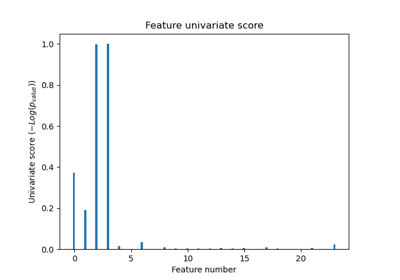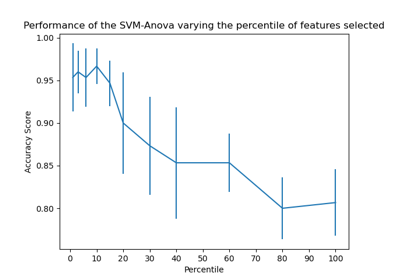sklearn.feature_selection.f_classif¶
- sklearn.feature_selection.f_classif(X, y)[source]¶
Compute the ANOVA F-value for the provided sample.
Read more in the User Guide.
- Parameters:
- X{array-like, sparse matrix} of shape (n_samples, n_features)
The set of regressors that will be tested sequentially.
- yarray-like of shape (n_samples,)
The target vector.
- Returns:
- f_statisticndarray of shape (n_features,)
F-statistic for each feature.
- p_valuesndarray of shape (n_features,)
P-values associated with the F-statistic.
See also
chi2Chi-squared stats of non-negative features for classification tasks.
f_regressionF-value between label/feature for regression tasks.
Examples
>>> from sklearn.datasets import make_classification >>> from sklearn.feature_selection import f_classif >>> X, y = make_classification( ... n_samples=100, n_features=10, n_informative=2, n_clusters_per_class=1, ... shuffle=False, random_state=42 ... ) >>> f_statistic, p_values = f_classif(X, y) >>> f_statistic array([2.2...e+02, 7.0...e-01, 1.6...e+00, 9.3...e-01, 5.4...e+00, 3.2...e-01, 4.7...e-02, 5.7...e-01, 7.5...e-01, 8.9...e-02]) >>> p_values array([7.1...e-27, 4.0...e-01, 1.9...e-01, 3.3...e-01, 2.2...e-02, 5.7...e-01, 8.2...e-01, 4.5...e-01, 3.8...e-01, 7.6...e-01])


